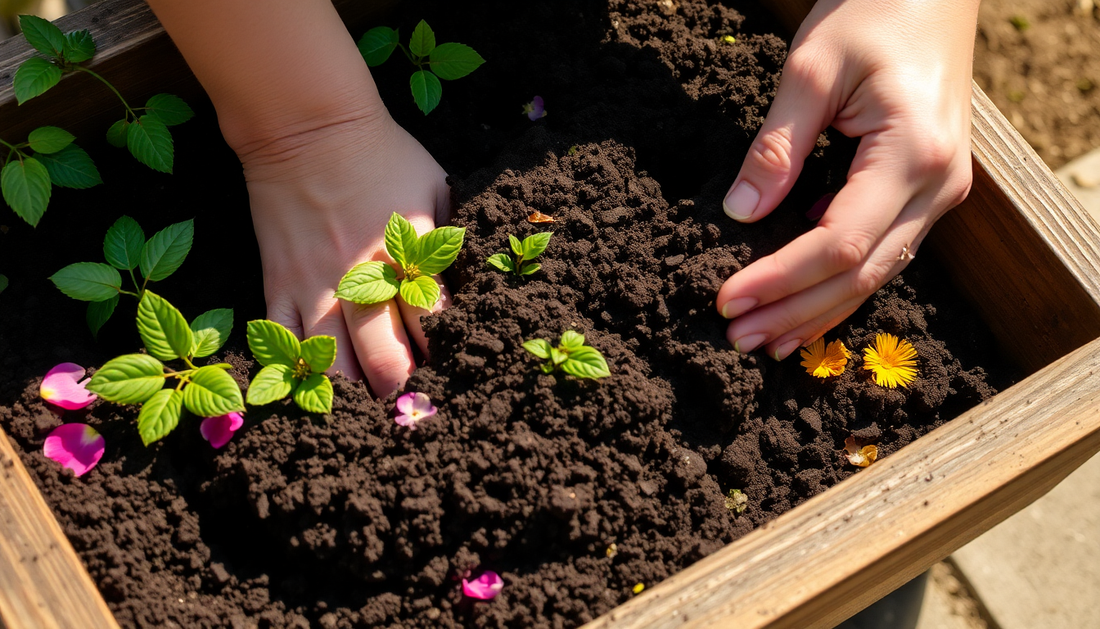
Crafting the Perfect Potting Mix for Hardy Flowering Shrubs
Share
As a passionate gardener, I've always been fascinated by the vibrant colors and lush foliage of flowering shrubs. These hardy plants not only add beauty to our outdoor spaces but also provide valuable habitats for pollinators and other wildlife. However, to ensure their optimal growth and health, it's crucial to provide them with the right potting mix. In this comprehensive guide, I'll share my expertise on how to prepare a tailored potting mix that will help your flowering shrubs thrive.
Understanding the Needs of Flowering Shrubs
Flowering shrubs are a diverse group of plants that come in a wide range of shapes, sizes, and bloom times. From the delicate azaleas to the robust hydrangeas, each species has its own unique soil requirements. In general, these plants prefer well-draining, nutrient-rich soil that retains moisture without becoming waterlogged.
One of the key factors to consider is the pH level of the soil. Most flowering shrubs thrive in slightly acidic to neutral soil, with a pH range of 5.5 to 6.5. This pH range ensures that the plants can effectively absorb essential nutrients, such as nitrogen, phosphorus, and potassium, which are crucial for healthy growth and vibrant blooms.
Selecting the Right Ingredients
To create the perfect potting mix for your flowering shrubs, you'll need to gather a few key ingredients. The goal is to strike a balance between drainage, moisture retention, and nutrient content. Here are the components I recommend:
Peat Moss or Coco Coir
Peat moss and coco coir are both excellent sources of organic matter that help retain moisture and improve soil structure. They also contribute to the slightly acidic pH that flowering shrubs prefer.
Compost or Aged Bark
Adding a generous amount of compost or aged bark to your potting mix will provide a steady supply of essential nutrients for your plants. These organic materials also help improve soil aeration and drainage.
Vermiculite or Perlite
Incorporating vermiculite or perlite into your potting mix will enhance drainage and prevent soil compaction, which is crucial for the health of flowering shrubs.
Slow-Release Fertilizer
To ensure your flowering shrubs receive a balanced and sustained supply of nutrients, consider adding a slow-release fertilizer to your potting mix. This will help support healthy growth and vibrant blooms throughout the growing season.
Preparing the Potting Mix
Now that you have all the necessary ingredients, it's time to get mixing! Here's a step-by-step guide to creating the perfect potting mix for your flowering shrubs:
- Start with a base of peat moss or coco coir, which should make up about 40-50% of the total volume.
- Add 20-30% compost or aged bark to provide essential nutrients and improve soil structure.
- Incorporate 20-30% vermiculite or perlite to enhance drainage and aeration.
- Mix in a slow-release fertilizer according to the manufacturer's instructions, ensuring an even distribution throughout the mix.
- Gently combine all the ingredients until you have a homogeneous, lightweight, and well-aerated potting mix.
It's important to note that the exact ratios may need to be adjusted based on the specific needs of your flowering shrubs and the local soil conditions in your area. Experiment with different mixes and monitor the results to find the perfect formula for your garden.
Maintaining the Potting Mix
Once you've created your custom potting mix, it's essential to maintain it to ensure the continued health and vigor of your flowering shrubs. Here are some tips:
Replenish Nutrients
Over time, the nutrients in your potting mix will become depleted. Regularly top-dressing your plants with a balanced, slow-release fertilizer or compost will help replenish the necessary nutrients.
Monitor Moisture Levels
Flowering shrubs require consistent moisture, but they can't tolerate waterlogged soil. Check the moisture levels regularly and adjust your watering schedule accordingly.
Aerate the Soil
To prevent soil compaction, use a garden fork or cultivator to gently aerate the potting mix around your flowering shrubs. This will help improve drainage and allow for better root growth.
Refresh the Mix
Over time, the potting mix may break down and lose its structure. Every few years, consider refreshing the mix by removing the top layer and replacing it with a new batch of your homemade potting mix.
By following these steps, you'll be well on your way to creating a thriving, vibrant garden filled with the beauty of flowering shrubs. Remember, the key to success lies in understanding the unique needs of your plants and tailoring your potting mix accordingly. Happy gardening!
